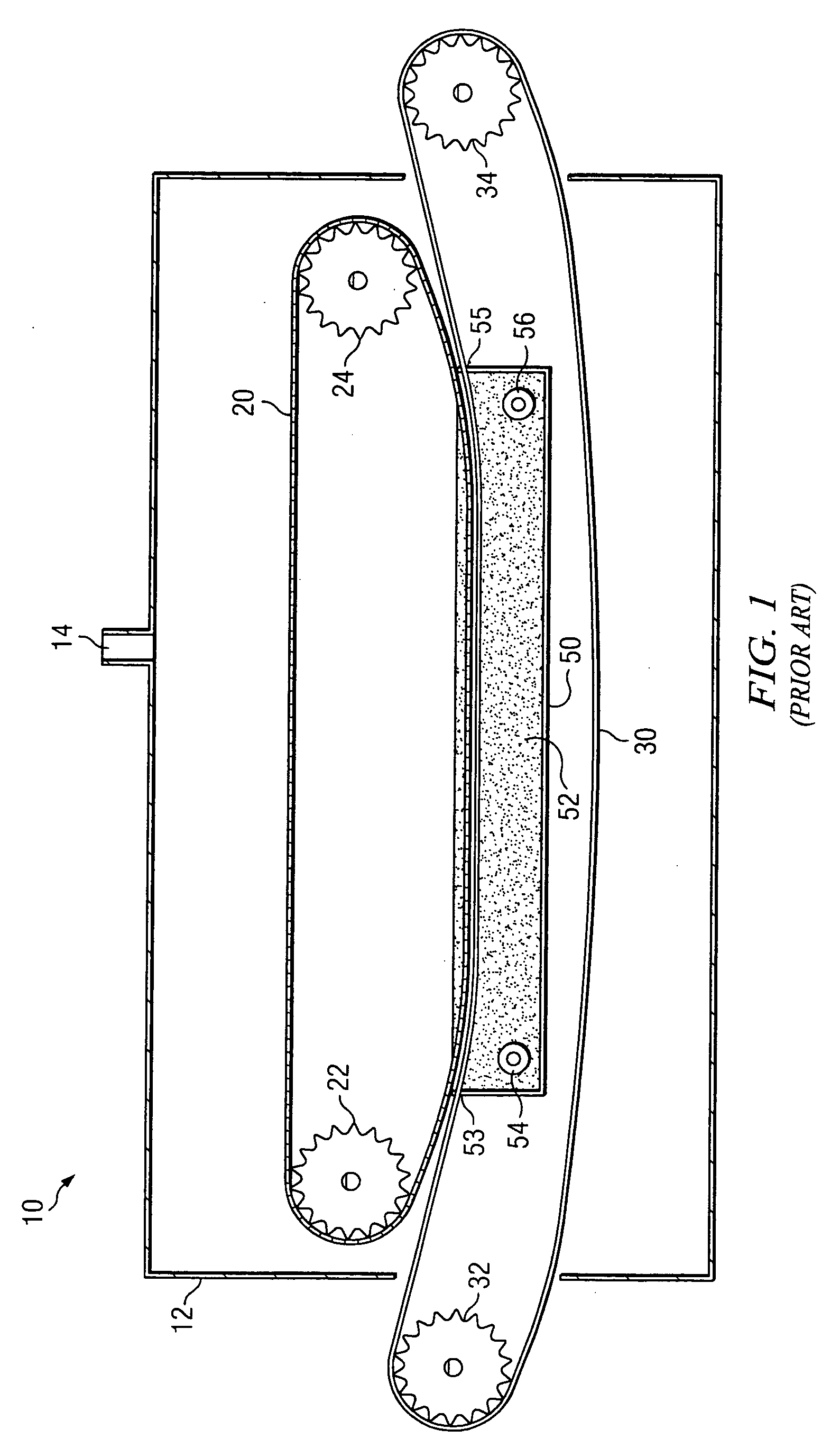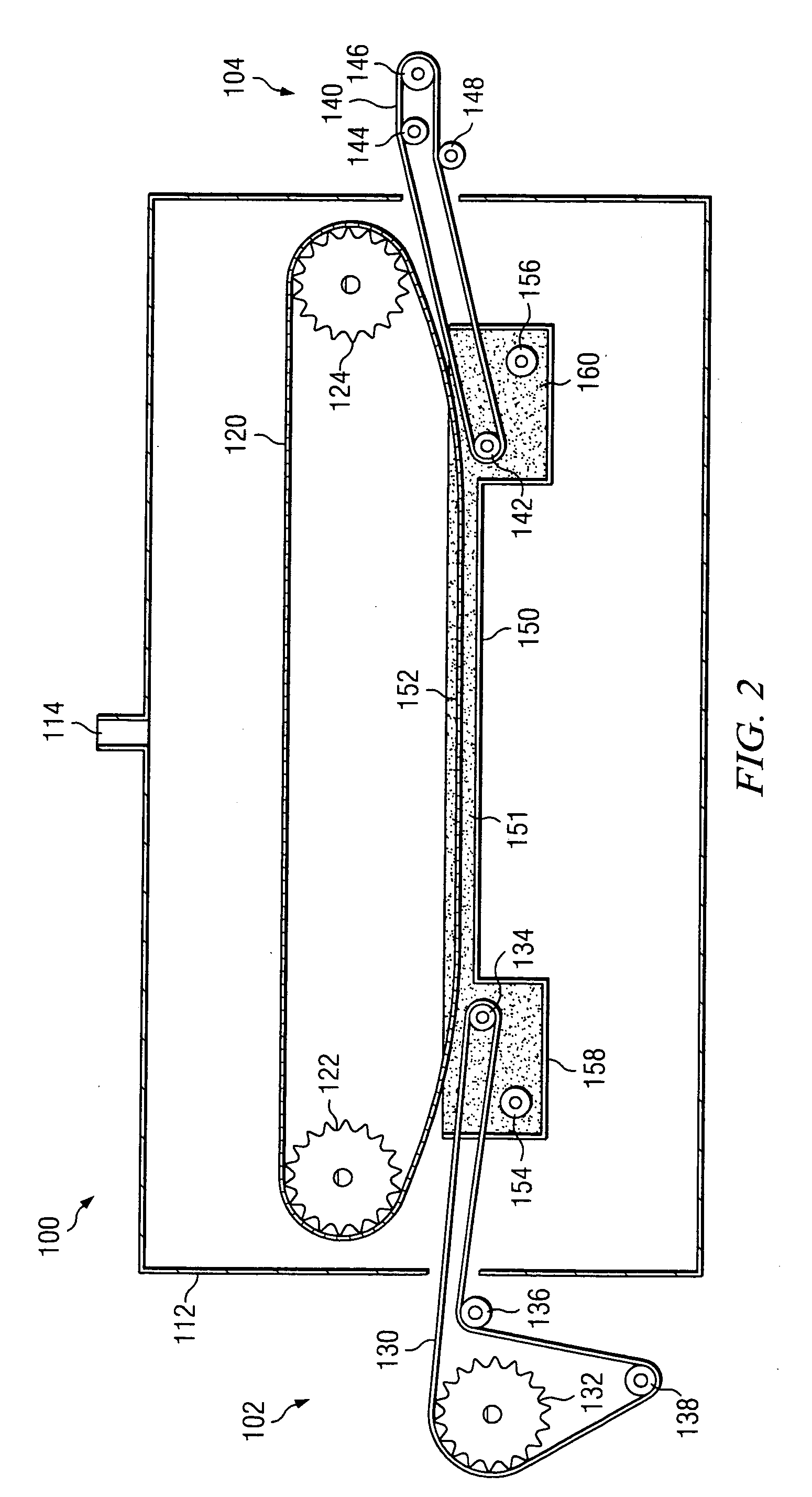Fryer atmosphere control for mold form fryer
- Summary
- Abstract
- Description
- Claims
- Application Information
AI Technical Summary
Benefits of technology
Problems solved by technology
Method used
Image
Examples
Embodiment Construction
[0106] Apparatus
[0107] As explained above in the Background section, sparge steam is often introduced into an enclosed area above a fryer to displace oxygen, which undesirably oxidizes or degrades cooking oil. As used herein, sparge steam and steam are interchangeable and can include any inert gas. As used herein, an inert gas is defined as any gas that does not react with the product or the frying medium. Use of an inert gas such as sparge steam is particularly useful where the frying product does not produce enough steam to displace the air in the fryer. In addition to using sparge steam, losses due to oxidation / degradation of the oil can also be reduced by modifying the fryer itself. For example, when manufacturing molded, fried products, a prior art double-mold form fryer (two molding surfaces—top and bottom—for each product piece) can be replaced with a single-mold form fryer (one molding surface for each product piece) such as the single-mold form fryer disclosed in U.S. pate...
PUM
 Login to view more
Login to view more Abstract
Description
Claims
Application Information
 Login to view more
Login to view more - R&D Engineer
- R&D Manager
- IP Professional
- Industry Leading Data Capabilities
- Powerful AI technology
- Patent DNA Extraction
Browse by: Latest US Patents, China's latest patents, Technical Efficacy Thesaurus, Application Domain, Technology Topic.
© 2024 PatSnap. All rights reserved.Legal|Privacy policy|Modern Slavery Act Transparency Statement|Sitemap



